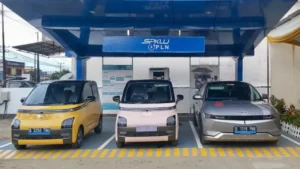Art and Technology: Bridging the Gap Between Tradition 2024
5 min read
Art and Technology
Contents
Art and Technology the age of rapid technological advancement, the boundaries between art and technology have become increasingly blurred, giving rise to innovative and thought-provoking creations that challenge traditional notions of both disciplines. This convergence of art and technology opens up new avenues for creative expression, pushing the boundaries of what is possible and redefining the way we perceive and interact with the world around us.
Art and Technology Collaboration: Fostering Innovation in the Digital Age

The Evolution of Art And Technology in the Digital Age
The digital revolution has transformed the way artists conceptualize, create, and present their work. With the advent of digital tools and software, artists now have access to a vast array of mediums and techniques that were once unimaginable. From digital painting and 3D modeling to interactive installations and virtual reality experiences, technology has enabled artists to explore new forms of expression and engage audiences in novel ways.
One notable example of this is the rise of generative art, where algorithms and computer programs are used to create dynamic and ever-changing artworks. Artists harness the power of code to generate intricate patterns, shapes, and colors, resulting in mesmerizing visual experiences that evolve over time. Generative art not only blurs the line between the artist and the artwork but also challenges traditional notions of authorship and creativity.
Exploring the Boundaries of Virtual Reality
Virtual reality (VR) has emerged as a powerful medium for artistic exploration, allowing artists to create immersive worlds and experiences that transcend the confines of physical space. Through VR, audiences can step inside artworks, interact with them in real-time, and explore new narratives and perspectives.
One of the most compelling aspects of VR art is its ability to evoke a sense of presence and embodiment, transporting viewers to alternate realities and challenging their perceptions of space and time. Artists are harnessing the immersive qualities of VR to create deeply impactful experiences that provoke thought, evoke emotion, and inspire reflection.

Interactive Installations and Participatory Art
Interactive installations represent another exciting frontier in the intersection of art and technology. These artworks invite viewers to actively engage with the piece, becoming co-creators in the artistic experience. Whether through gesture recognition, motion sensors, or biofeedback devices, interactive installations blur the boundaries between the artwork and the audience, transforming passive spectators into active participants.
By encouraging interaction and collaboration, interactive installations foster new forms of engagement and connection, fostering a sense of community and shared experience. These artworks challenge yowestogel traditional notions of authorship and ownership, inviting viewers to become collaborators in the creative process and shaping the evolution of the artwork in real-time.
The intersection of Art and Technology
Represents a fertile ground for creative exploration and experimentation. As artists continue to push the boundaries of what is possible, we can expect to see even more innovative and boundary-breaking artworks emerge, challenging our perceptions and expanding our understanding of both art and technology. By embracing this convergence, we open up new possibilities for creative expression, collaboration, and cultural exchange, enriching our lives and shaping the future of human expression.
The Pros and Cons of Art and Technology Integration
The fusion of art and technology has sparked both excitement and debate, as proponents celebrate its potential for innovation while critics raise concerns about its impact on traditional artistic practices. Examining the advantages and disadvantages of this integration offers insights into the complex relationship between creativity and technology.

Advantages Art And Technology
- Expanded Creative Possibilities: Technology provides artists with a vast array of tools and mediums to experiment with, expanding the possibilities for creative expression. From digital painting and 3D modeling to virtual reality and interactive installations, artists can explore new forms and push the boundaries of traditional art.
- Enhanced Accessibility: Digital platforms and online galleries have democratized the art world, making it more accessible to a global audience. Artists can showcase their work online, reaching audiences beyond geographical boundaries and traditional art institutions.
- Interactivity and Engagement: Technology enables artists to create immersive and interactive experiences that engage audiences in new ways. Interactive installations, virtual reality experiences, and augmented reality artworks invite viewers to actively participate in the artistic process, fostering deeper engagement and connection.
- Collaboration and Interdisciplinarity: The intersection of art and technology encourages collaboration across disciplines, bringing together artists, technologists, scientists, and designers to explore new ideas and solve complex problems. This interdisciplinary approach fosters innovation and creativity by combining diverse perspectives and skill sets.
- Adaptability and Experimentation: Technology is constantly evolving, providing artists with opportunities for continuous experimentation and innovation. Artists can adapt to new technologies and incorporate them into their practice, pushing the boundaries of what is possible and exploring new artistic frontiers.
Disadvantages Art And Technology
- Depersonalization and Loss of Authenticity: The digitization of art can lead to a loss of the personal touch and authenticity that is inherent in traditional artistic practices. Mass production and reproduction technologies can dilute the uniqueness and value of individual artworks, leading to concerns about the commodification of art.
- Technological Dependence: Relying too heavily on technology can stifle creativity and limit artistic expression. Artists may become dependent on digital tools and software, sacrificing craftsmanship and spontaneity for the sake of convenience and efficiency.
- Accessibility Divide: While technology has made art more accessible to many, it also exacerbates existing inequalities in access to resources and education. Not everyone has access to the latest digital tools and technologies, creating a divide between those who can afford to embrace technology and those who cannot.
- Ethical and Privacy Concerns: The use of technology in art raises ethical and privacy concerns, particularly in relation to surveillance, data collection, and privacy infringement. Artists must navigate complex ethical considerations when using technologies such as facial recognition, biometrics, and surveillance systems in their work.
- Risk of Technological Obsolescence: Rapid technological advancement poses a risk of obsolescence for artists who rely heavily on digital tools and platforms. Artworks created using outdated technologies may become inaccessible or incompatible with future systems, raising questions about the longevity and preservation of digital art.
In conclusion Art And Technology
The integration of art and technology offers exciting opportunities for creative exploration and innovation, but it also presents challenges and risks that must be carefully considered. By recognizing the advantages and disadvantages of this integration, artists and technologists can work together to harness the power of technology while preserving the integrity and authenticity of artistic expression.
Read More Article About “Maersk Case: Lessons Learned from Cybersecurity Wake Call“






